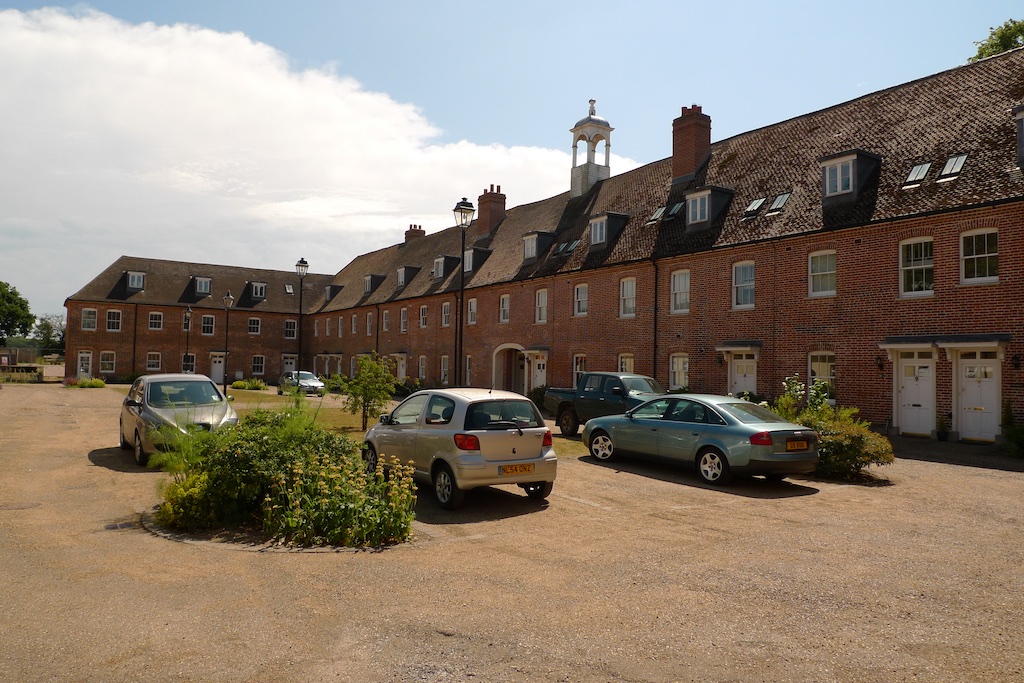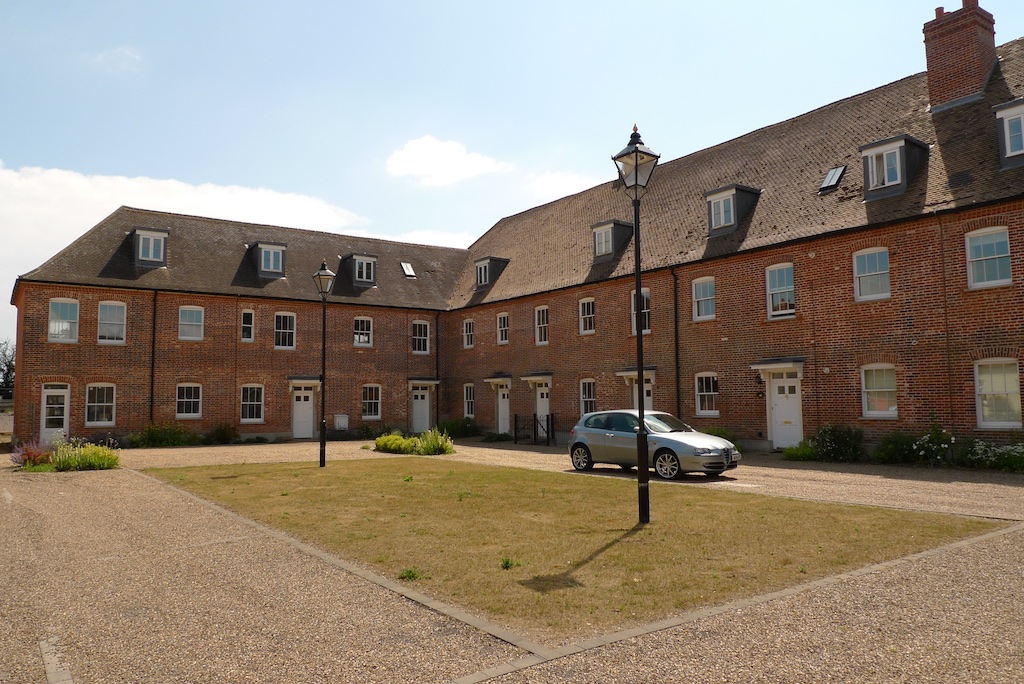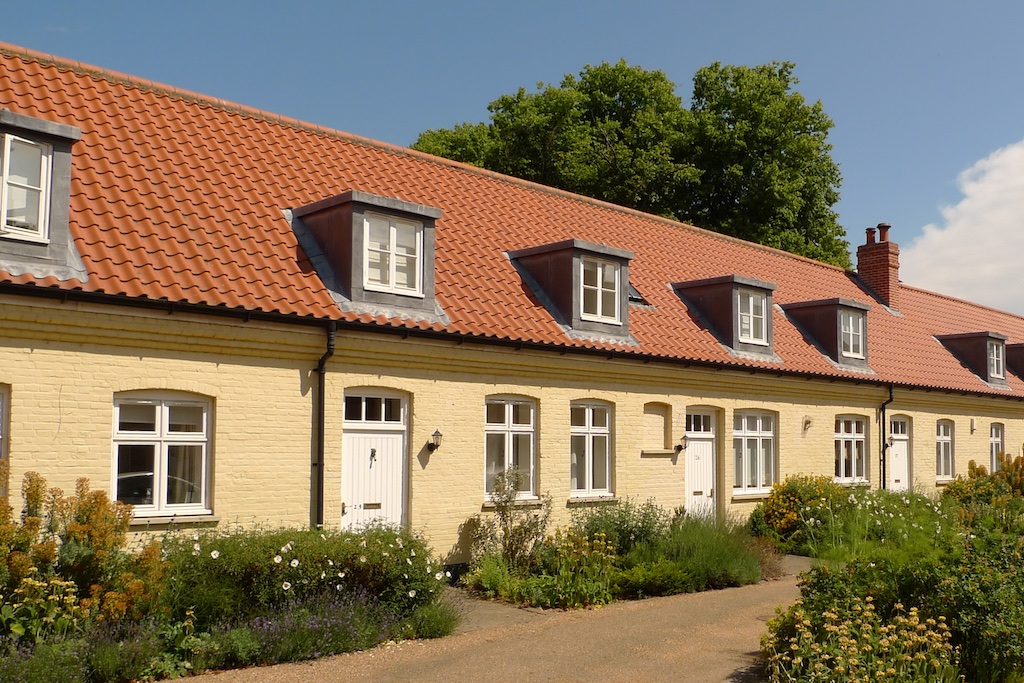Pictures of buildings mentioned in the second edition “Suffolk” volume of “The Buildings of England” series by Sir Nikolaus Pevsner.
Bulcamp is unusual for the first and second editions in that the entry does not include a church but devotes itself to a Hospital (a workhouse). In the third edition it is, probably more properly, included under Blythburgh as Blythview the new name for the living accommodations into which it has been converted.
This site is guided by the second edition and Pevsners own view of Suffolk buildings and so we lok to what he said: Built as a House of Industry, that is a workhouse, in 1765-6. Partly destroyed in a riot of 1766 and rebuilt. The first of the interesting series of C18 workhouses in Suffolk. The plans were drawn by Thomas Fulcher, who received 15 guineas for them and hiss journeys and attendances. Red brick, of two storeys, and remarkably extensive. H-shaped plan with wings projecting a little on one side, very far on the other. On that side in one wing is the chapel. This has pointed windows withY-casements. The other windows are small and segment-headed. The centre of the recessed part has a three—bay pediment and a lantern. There were lower wings connecting the ends of the projecting wings, one with cells for casuals, but they may not be paert of the original scheme. There is also a low office range in front of the other front, and that also may be an addition". When photographed in 2010 the conversion to Blythview was underway. Some of those views follow:
This site is guided by the second edition and Pevsners own view of Suffolk buildings and so we lok to what he said: Built as a House of Industry, that is a workhouse, in 1765-6. Partly destroyed in a riot of 1766 and rebuilt. The first of the interesting series of C18 workhouses in Suffolk. The plans were drawn by Thomas Fulcher, who received 15 guineas for them and hiss journeys and attendances. Red brick, of two storeys, and remarkably extensive. H-shaped plan with wings projecting a little on one side, very far on the other. On that side in one wing is the chapel. This has pointed windows withY-casements. The other windows are small and segment-headed. The centre of the recessed part has a three—bay pediment and a lantern. There were lower wings connecting the ends of the projecting wings, one with cells for casuals, but they may not be paert of the original scheme. There is also a low office range in front of the other front, and that also may be an addition". When photographed in 2010 the conversion to Blythview was underway. Some of those views follow:
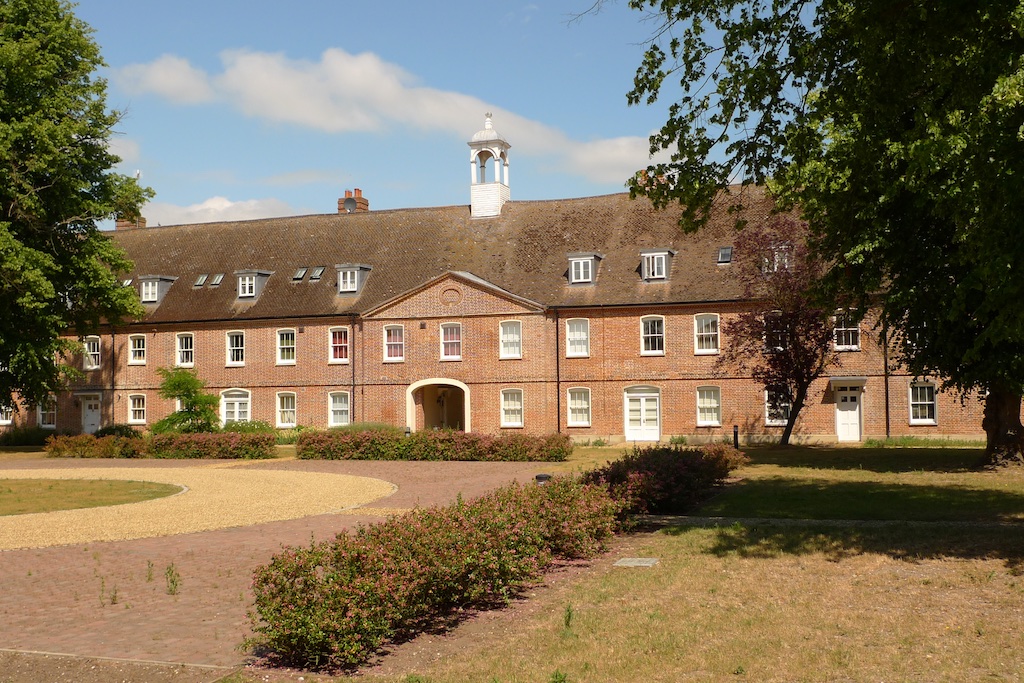
Another wider view:
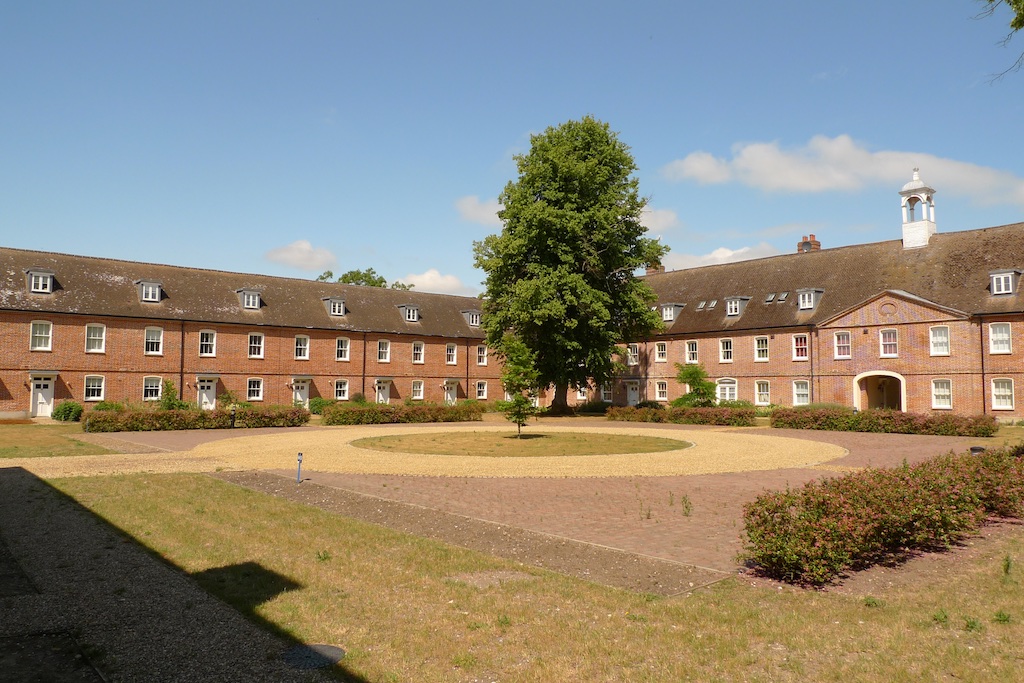
The wing with the former chapel:
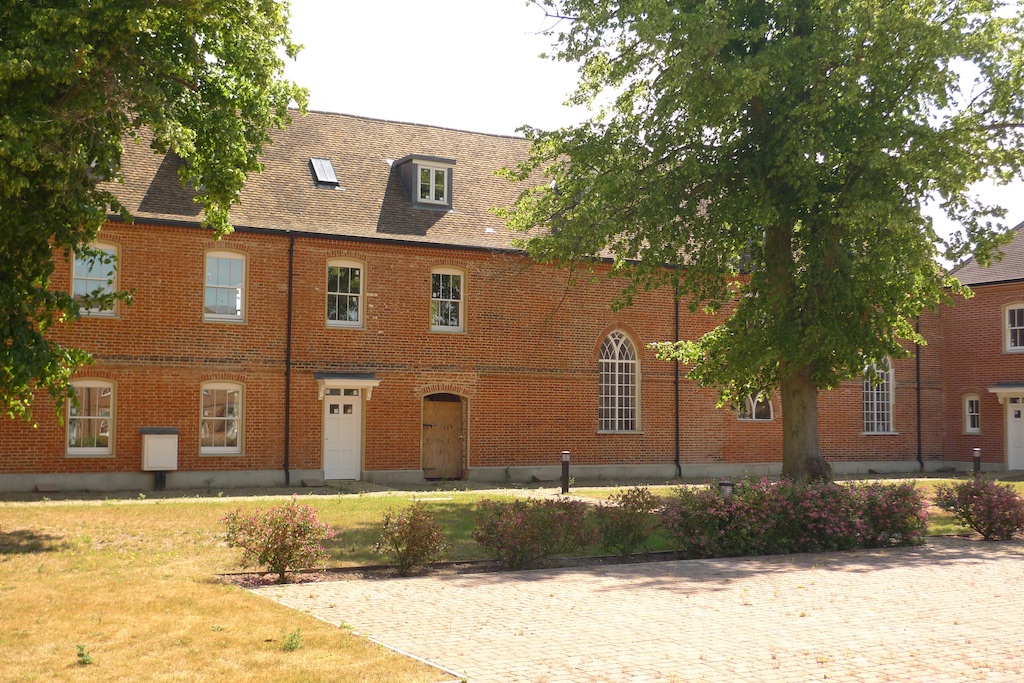

And more:
